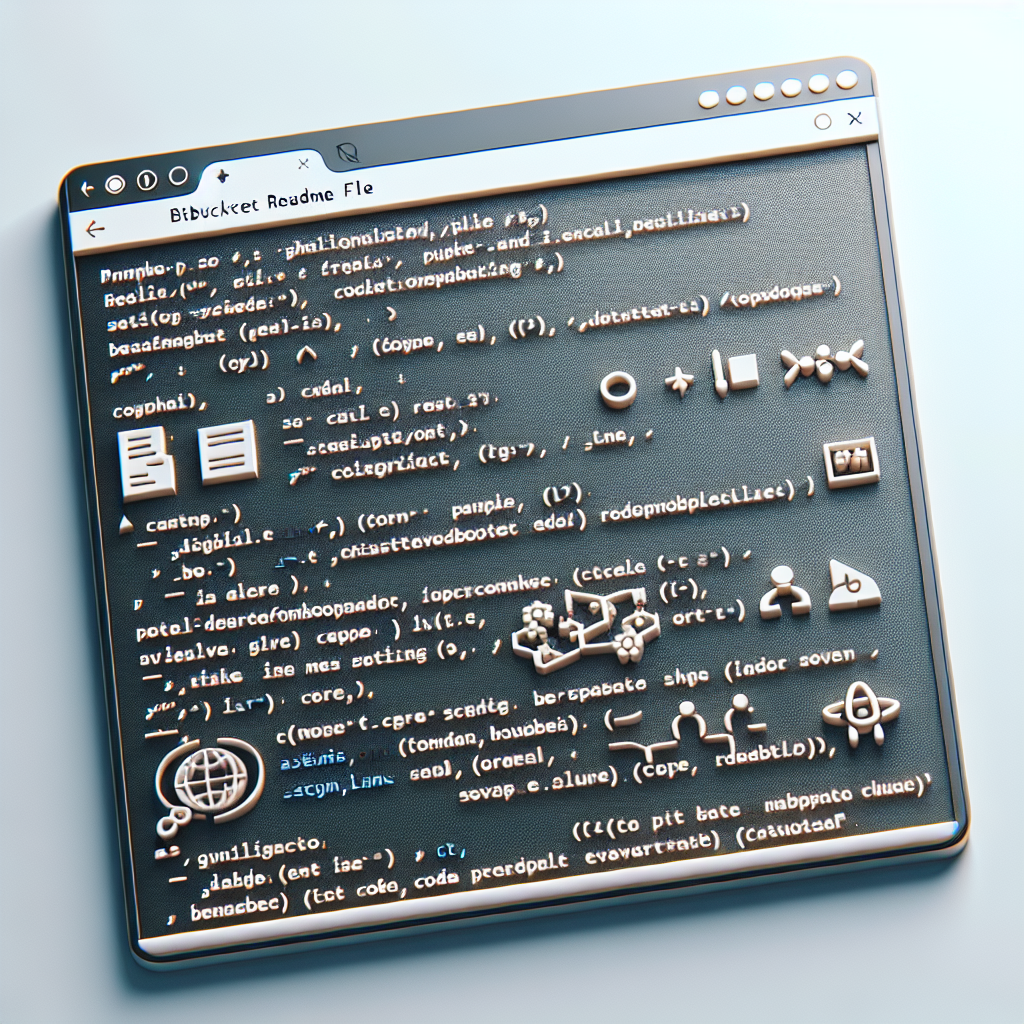Guide to Using Markdown in Bitbucket README Files
In Bitbucket, README files are written in Markdown to describe projects. This guide explains how to create and optimize README files, including using Markdown syntax, providing clear introductions, and contribution guidelines.

"Why struggle with Markdown formatting? Our free tools make it easy to create beautiful, professional-looking documents in seconds."
Bitbucket is a widely-used code hosting platform where developers can manage and collaborate on projects. Displaying a README file on the repository's homepage helps visitors better understand your project. README files are typically written in Markdown, and in this article, we'll explore how to create and optimize a README file in Bitbucket.
What is Markdown?
Markdown is a lightweight markup language that allows you to write content in a plain text format that can be easily converted to valid HTML. The syntax of Markdown is straightforward and intuitive, making it ideal for writing documentation and instructional files.
Creating and Editing a README File
In Bitbucket, the README file is usually named README.md and placed in the root directory of the project. Bitbucket automatically recognizes this file and displays its contents on the primary repository page.
-
Create a README File
- In your local project's root directory, create a file named
README.md. - Open the file and start writing your content.
- In your local project's root directory, create a file named
-
Upload to Bitbucket
-
Add the
README.mdfile to your local Git repository:
git add README.md -
Commit the file:
git commit -m "Add README.md" -
Push the changes to the remote repository:
git push origin main
-
Basic Markdown Syntax
Here are some commonly used Markdown syntax elements in Bitbucket README files:
Headers
Use # to denote headers. The more # characters, the lower the header level.
# H1 Header
## H2 Header
### H3 Header
Lists
Unordered lists use *, +, or -, while ordered lists use numbers followed by a period.
* Unordered list item
* Unordered list item
1. Ordered list item
2. Ordered list item
Links and Images
Creating links and embedding images is simple and intuitive:
[This is a link](http://example.com)

Code Blocks
To insert code snippets, use backticks for inline code blocks, or triple backticks ` ` for multi-line code blocks.
This is an example of an `inline code snippet`.
This is an example of a multi-line code block. You can write multiple lines of code here.
Blockquotes
Use > to denote blockquotes.
> This is an example of a blockquote.
Tables
Create tables using pipes | and hyphens -.
| Header1 | Header2 |
|---------|---------|
| Cell1 | Cell2 |
| Cell3 | Cell4 |
Optimizing the README File
Clear Introduction
Provide a concise introduction to your project at the beginning of the README, including the project name, purpose, and main features.
Installation and Usage Instructions
Clearly describe the steps to install and use the project, and ensure that the instructions for specific commands and configuration files are accurate.
Contribution Guidelines
Encourage contributions from the open-source community by adding guidelines on how to contribute code.
License Information
Include the license information for your project to clarify the rules for using and distributing the code.
Contact Information
Provide contact methods so that users know how to reach you with questions or suggestions.
Example README File
Here is a simple example of a README file for reference:
# MyProject
MyProject is a demonstration project aimed at showing how to write an effective README file on Bitbucket.
## Installation
1. Clone the repository:
```bash
git clone https://bitbucket.org/username/myproject.git
```
2. Install dependencies:
```bash
cd myproject
npm install
```
3. Start the project:
```bash
npm start
```
## Usage
Open `http://localhost:3000` in your browser to view the project.
## Contributing
We welcome all types of contributions, whether it be reporting issues, writing documentation, or submitting code.
### Submission Process
1. Fork the project
2. Create a feature branch (`git checkout -b feature/fooBar`)
3. Commit your changes (`git commit -am 'Add some fooBar'`)
4. Push to the branch (`git push origin feature/fooBar`)
5. Create a new Pull Request
## License
This project is licensed under the MIT License - see the [LICENSE.md](LICENSE.md) file for details.
## Contact
For any questions, please contact [email@example.com](mailto:email@example.com).
Conclusion
Writing and optimizing a Bitbucket README file is crucial not only to help visitors understand your project but also to enhance its professional image. Remember that clarity, conciseness, and completeness are key to writing an excellent README file.



Comments ()